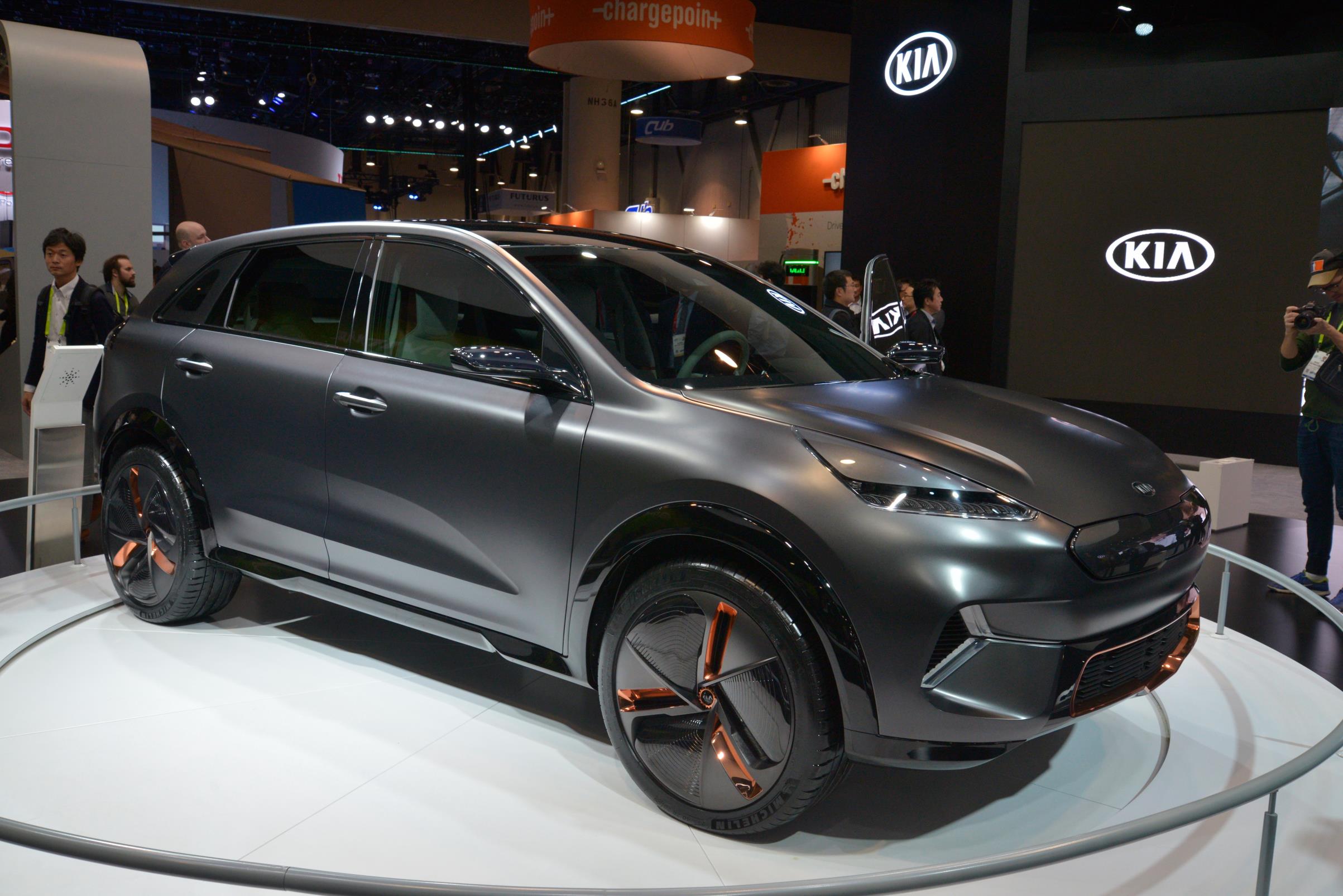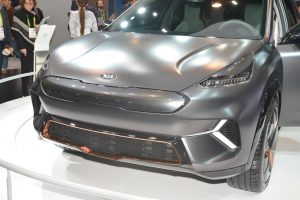More Than Just an Electric Vehicle
Kia rolled into the 2018 Consumer Electronics Show yesterday to unveil a new all-electric concept car called the Kia Niro EV. The Korean automaker also laid out its electrified vehicle plans along with showcasing a number of advanced car technologies. The company says its green lineup will consist of a mixture of different electrified powertrains, from entirely battery-electric through hybrids and even a fuel-cell car.
“By 2025, we will offer a total of 16 advanced powertrain vehicles, with five new hybrids and plug-in hybrids, five new battery EVs, and an all-new mass-market FCEV (fuel cell electric vehicle),” Dr. Woong-chul Yang, vice chairman and head of the Kia R&D Center, said. “Due to launch in 2020, this FCEV will spearhead Kia’s efforts to realize a zero-emission future for mobility.”
A Big Leap Beyond the Kia Soul EV

Scheduled for production in late 2018, the Niro EV, with a driving range of 238 miles, takes a big leap beyond the company’s 2018 Soul EV (with an EPA rated 111 miles of electric driving). The Niro EV is not simply a rebodied version of parent company’s Hyundai Ioniq EV, which has a 110-mile range.
To achieve that 238 miles in what Kia is calling its “next-generation electric powertrain,” the Niro EV’s range comes from a 64 kWh lithium-polymer battery pack that supplies power to a 200 horsepower (150 kW) electric motor. If that 238-mile figure sounds familiar, it’s because that’s the rated range of the 2018 Chevrolet Bolt EV. The Bolt EV’s drive motor is rated at 150 kW as well.
An Almost Production Version
Calling the Niro EV a concept car may be a misnomer. It is really a not-quite-production version of what an all-electric example of the Niro Hybrid and Niro Hybrid Plug-in would look like. Since the traditional grille is no longer required for cooling the engine, Kia’s designers have replaced it with an interactive display panel. The lights have been shrunk down, courtesy of new ultra-slim lamps.

It appears the Niro EV has a higher ride height, perhaps to disguise a larger battery pack that hangs a bit lower under the car. While the existing production Kia Niro has donated most of the styling appearance, designers apparently did additional aerodynamic work at the back, with sharp trailing edges easing airflow off the sides and what the company calls a “seamless rear aspect.”
Tech Advances
Inside, there’s a new wraparound design to the dashboard, finished in silver, grey, and bronze. It features a new human machine interface (HMI) with touch and gesture controls for the climate control system and a touch-sensitive steering wheel. Swiping along different areas of the wheel can control volume, track skipping, and climate settings. A digital display shows speed, powertrain and other trip information.

Kia also envisages face and voice recognition being used in preference to a traditional key. Powered by Amazon Web Services (AWS), it can track who is approaching and getting into the house, and then selectively control which aspects of control are available to them. For example, the Niro EV Concept could theoretically limit its maximum power if it recognized a teen driver behind the wheel.
A new Active Pedestrian Warning System (APWS) builds on the combination of front-facing cameras by adding object recognition software and speakers mounted at the front of the Niro EV Concept. If the system spots a pedestrian or cyclist, it can sound an alarm targeted specifically at that person.
Finally, a practical technology is dual-zone audio. The system uses speakers in headrests along with active noise-cancelling to allow front-seat and back-seat passengers to listen to two different things simultaneously without disturbing the others, and without the use of headphones.
When the Kia EV production version finds its way into dealerships late this year, the concept’s electric drivetrain will remain intact and styling will most likely be a carbon copy. Pricing has not been announced, but with a driving range equal to the Chevy Bolt, expect it to be $2,000-$3,000 less than the Bolt. That would mean less than $30,000 after a federal tax credit.
Other CES Stories:
News: 2019 Hyundai Nexo FCEV
News: Byton Introduces Electric SUV
News: Fisker EMotion Introduced for High Rollers
Related Stories You Might Enjoy:
Riad Test: 2016 Kia Soul EV
News: Hyundai-Kia’s Future Is Electric
Road Test: 2017 Hyundai Ioniq Electric

4 thoughts on “News: Kia Niro EV Showcased At 2018 CES”